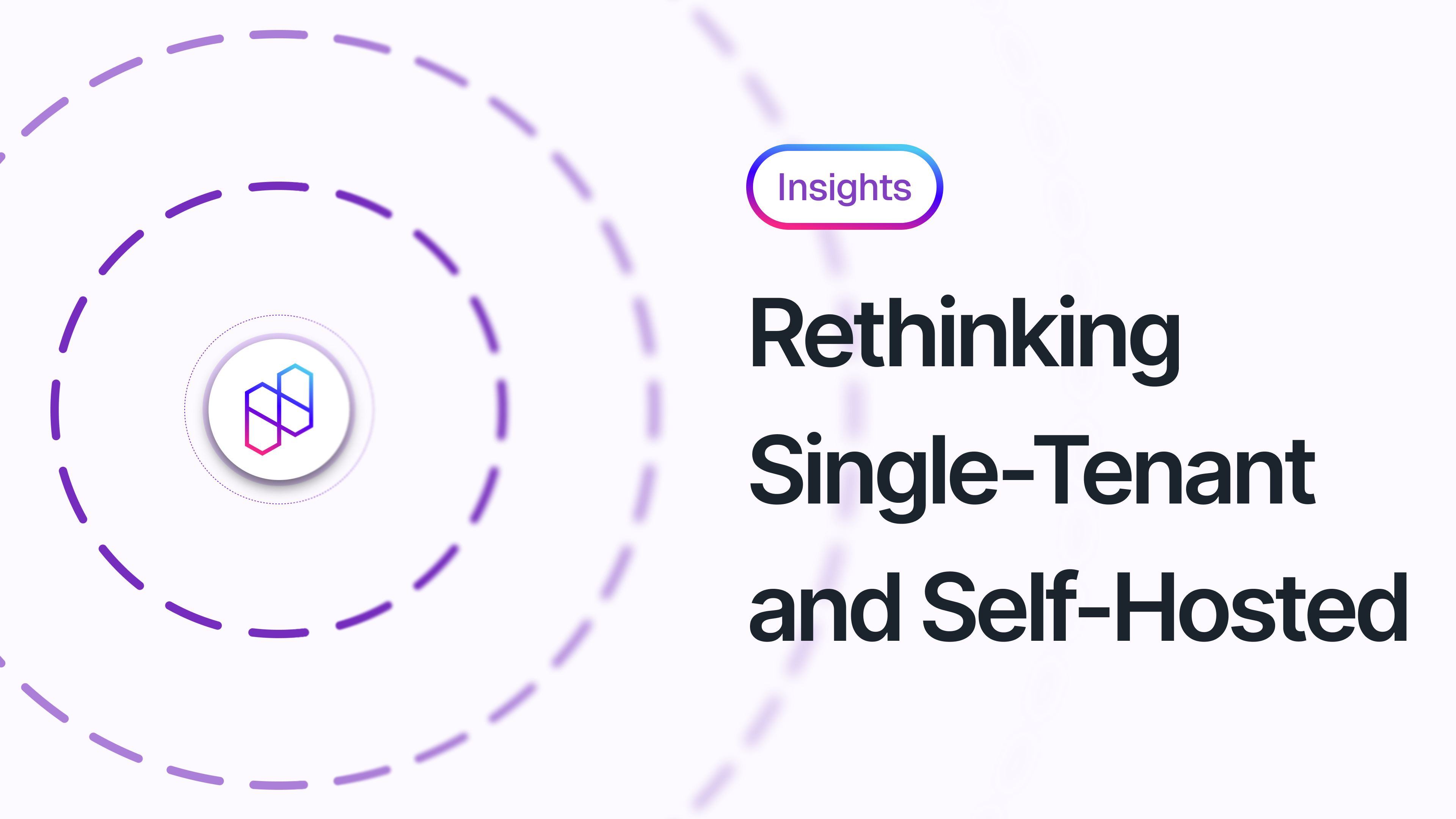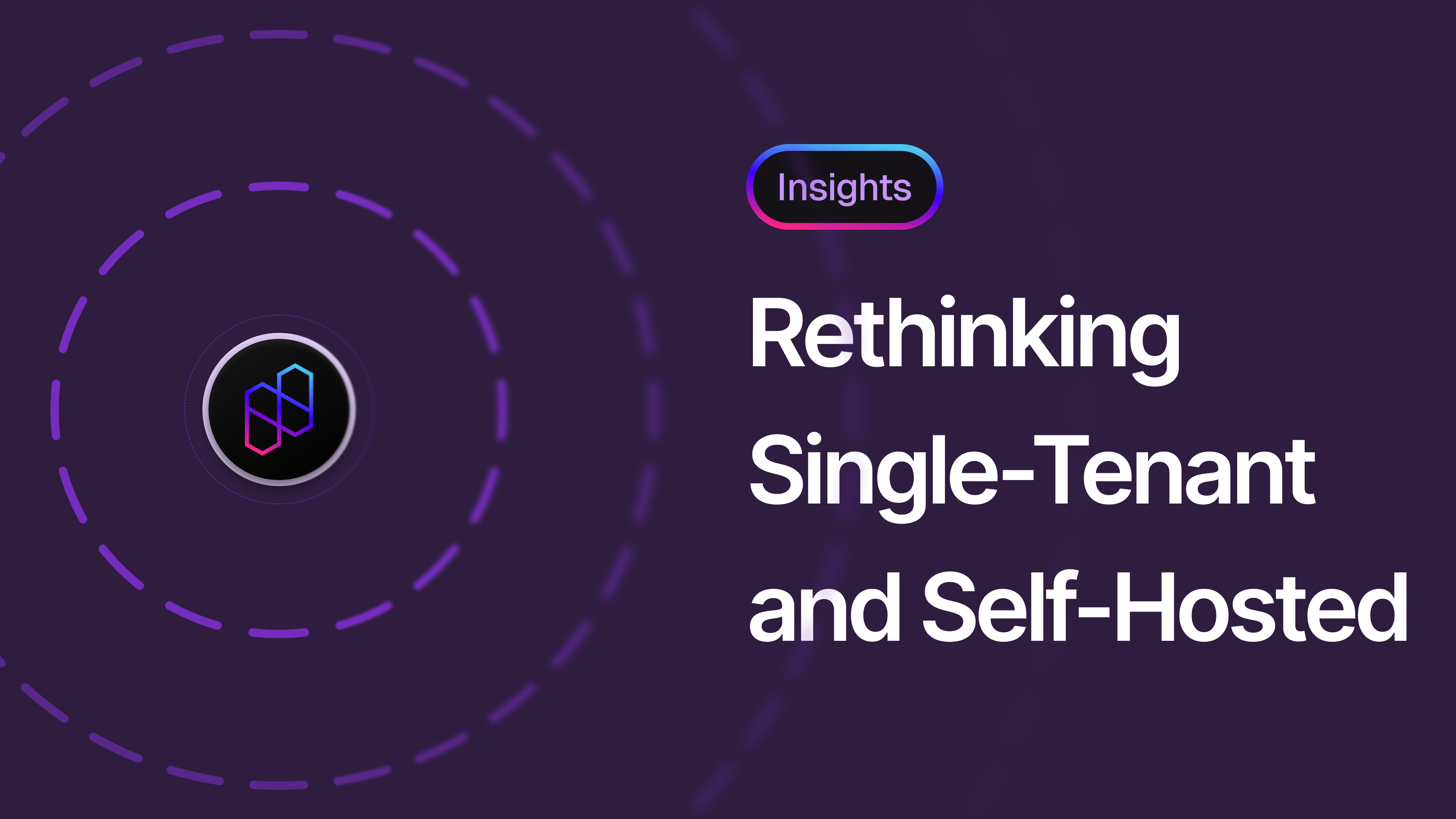Rethinking Single-Tenant and Self-Hosted Architectures
An analysis of the challenges in traditional software deployment models and how a Bring Your Own Cloud (BYOC) platform offers a superior alternative for enterprise requirements.

Mark Milligan
VP of Revenue


For enterprise software vendors, the method of deployment is as critical as the application itself. While standard multi-tenant SaaS offers scalability and efficiency, it often falls short of the stringent security, data sovereignty, and compliance requirements of large enterprise customers. In response to these needs, two alternative models became prominent: vendor-managed single-tenancy and customer-managed self-hosting.
Both of these models were developed specifically to give customers greater data isolation and control than is possible in a shared multi-tenant environment. However, while solving one set of problems, they introduce new and significant challenges related to cost, operational complexity, and control. This article will examine these challenges in detail and propose a modern deployment strategy that fully aligns with the security and efficiency demands of today's enterprise environments.
Examining Single-Tenant and Self-Hosted
1. The Vendor-Managed, Single-Tenant Model
In this deployment model, the vendor hosts a separate, isolated instance of their software for each customer within the vendor's own cloud infrastructure. This approach attempts to provide a dedicated environment with the convenience of a managed service, satisfying the need for data isolation.
However, this model introduces several points of concern for enterprise customers:
- Cost Inefficiency and Lack of Transparency: The customer pays a premium that covers not only the software license but also the underlying infrastructure costs, plus the vendor's operational margin. This structure prevents customers from leveraging their own pre-negotiated cloud provider discounts and spending commitments.
- Data Security and Compliance Challenges: Although isolated, the customer's data still resides outside of their own security perimeter, within the vendor's cloud account. This arrangement creates hurdles for compliance with regulations like GDPR, HIPAA, and SOC 2, as customers must rely entirely on the vendor's security controls and assume associated third-party risk.
- Limited Infrastructure Control: The customer has no direct control over the underlying infrastructure. This restricts their ability to integrate their own preferred security, monitoring, and observability tools at a foundational level, creating operational blind spots.
2. The Customer-Managed, Self-Hosted Model
To achieve maximum control and keep data entirely within their own perimeter, many enterprises opt for a self-hosted model. Here, the customer is responsible for installing, configuring, and managing the software within their own on-premise data center or cloud environment.
While this grants customers ultimate control, it does so at a high price:
- Significant Operational Burden: The responsibility for the entire application lifecycle—including installation, updates, patches, and maintenance—shifts to the customer. This necessitates a dedicated team of skilled DevOps or platform engineers, dramatically increasing the Total Cost of Ownership (TCO).
- Increased Support Complexity: The vendor's support organization must contend with a wide array of disparate customer environments. Debugging and resolving issues becomes inefficient and time-consuming due to variations in infrastructure, network configurations, and software versions.
- Version Fragmentation and Slow Innovation: As customers manage their own update schedules, the installed base becomes fragmented across numerous different versions. This slows the adoption of new features and forces the vendor to dedicate engineering resources to maintaining older, less secure codebases.
A Modern Alternative: The Bring Your Own Cloud (BYOC) Model
A third model, Bring Your Own Cloud (BYOC), has emerged to resolve these challenges. BYOC architecture is designed to offer the best of both worlds: a fully managed software experience for the customer, with the application running securely inside the customer's own cloud account.
In a BYOC model, a vendor’s control plane — which is what Nuon provides — automates the deployment and lifecycle management of the application. Meanwhile, what we refer to as the data plane — the vendor's entire application stack, encompassing both its own control and data planes—resides entirely within the customer's cloud environment.
This approach delivers clear benefits:
- Enhanced Security and Control: The customer's data remains within their secure cloud perimeter at all times, subject to their established security and governance policies.
- Improved Cost-Efficiency: Customers utilize their own cloud accounts, allowing them to take full advantage of existing enterprise discount programs and committed use contracts.
- Simplified Operations: The vendor manages application deployment, updates, and monitoring from a central control plane, ensuring consistency and eliminating version fragmentation.
How BYOC Redefines the Security Contract
The security approaches of modern and traditional deployment models differ fundamentally in trust and control. With Nuon's BYOC platform, security is based on a least-privilege contract defined by the vendor. When an install begins, the customer runs a Nuon-generated stack in their own cloud, creating a sandboxed VPC and VM with an egress-only runner.
This runner operates with strictly defined policies and permission boundaries, performing only the automated tasks specified in the app and reporting back to the Nuon control plane without ever receiving inbound connections or direct vendor access. All actions are logged for complete transparency.
This contrasts sharply with self-hosted models, where vendor support often requires the customer to grant broad, standing, and high-risk permissions, such as SSH keys or admin-level cloud roles.
In the single-tenant model, the contrast is even starker; the customer has no direct control and must place blind trust in the vendor's security posture, as their data and the application reside entirely within the vendor's cloud environment, outside their own security perimeter.
By contrast, many home-built or alternative BYOC approaches rely on cross-account access, VPC peering, or other network bridges that expand the trust boundary and increase the attack surface, whereas Nuon’s runner model avoids these patterns entirely for a more secure and auditable deployment.
The Strategic Choice: Building vs. Buying a BYOC Platform
The advantages of the BYOC model are compelling. However, developing a proprietary BYOC platform is a significant undertaking for a software vendor. It requires a substantial, long-term investment in specialized engineering talent with deep expertise in multi-cloud infrastructure automation, Kubernetes, and enterprise-grade security. This effort inevitably diverts resources from the development of the core software product.
This is where Nuon's platform provides a strategic advantage.
Nuon is an off-the-shelf BYOC platform that enables vendors to deploy their applications into their customers' cloud environments securely and efficiently.
Our solution handles the complex, undifferentiated work of infrastructure management, allowing your organization to:
- Meet Enterprise Requirements: Immediately offer a deployment model that satisfies the stringent security, data residency, and control requirements of large enterprises.
- Reduce Operational Overhead: Standardize customer deployments and manage all instances from a single, centralized interface.
- Accelerate Feature Delivery: Streamline the update process to ensure all customers can benefit from your latest product innovations.
The future of enterprise software delivery requires a model that does not force a choice between convenience and control. That future is built on a Bring Your Own Cloud foundation.